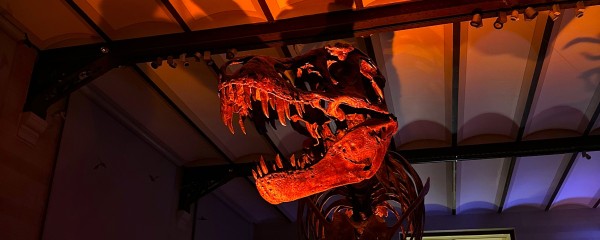Did early whales function the same way as marine reptiles?

Research from ULiège and RBINS investigated the morphological similarities between the earliest whales and ancient marine reptiles from the dinosaur-era, the mosasaurs. Four specimens from our collections were used for this study.
Did the earliest ancestors of whales pick up where the mosasaurs left off, following the extinction of all groups of large predatory marine reptiles 66 million years ago? A study lead by doctoral student Rebecca Bennion at the EDDyLab of the University of Liège (Belgium), published in the journal Paleobiology, looked at possible convergences in morphology and behaviour between these two groups of large, predatory marine animals.
Many of us will be familiar with modern whales and dolphins. However, the extinct ancestors of these modern marine mammals bear an uncanny resemblance to earlier forms of marine life, including the now-extinct mosasaurs (relatives of snakes and lizards). “The superficial similarities have long been noted, but the idea that these two groups might be functionally similar has never been rigorously tested,” explains Rebecca Bennion, PhD candidate and lead author, under supervision of RBINS paleontologist Olivier Lambert.
This recently published research in the journal Paleobiology, realised by an international team of scientists based in Europe, the USA, and New Zealand, investigated the potential for convergent evolution in the morphology of the skull between ancestral whales and mosasaurs. To achieve this, a series of functional characteristics and biomechanically relevant measurements were recorded from high-resolution three-dimensional (3D) scans of the skulls of both groups. “Our laboratory has gathered a vast library of 3D fossil scans, enabling us to explore large-scale evolutionary questions in detail,” explains Valentin Fischer, professor of palaeontology and director of the EDDy Lab.
The most interesting finding from the study was that, from the outset, whales and mosasaurs exhibited quite different ecological characteristics. From those different starting points, several very large-bodied species became similar in shape, which is called evolutionary convergence. “The convergent nature of the largest early whales with the largest mosasaurs tells us something about what it takes to function as the top marine predators” elaborates Dr. Jamie MacLaren, research associate at the ULiege EDDyLab, “Several members of these groups become very similar in their ecological characteristics, suggesting similar selective pressures on these animals despite them being separated by tens of million of years”. Nevertheless, important differences remain between the two groups despite these examples of convergence. “Our results show what is known as ‘incomplete convergence’, with differences remaining as a result of each group’s mammalian or reptilian ancestry.” continues Rebecca Bennion.
Modern whales are truly a very successful group, and it remains to be seen how varied their morphology and ecology are compared to other highly successful extinct marine vertebrates. This research represents just the tip of the iceberg; more investigations into convergence between marine animals throughout the fossil record will doubtless enable us to understand the constraints evolution places upon aquatic organisms, and how they overcome those constraints.






